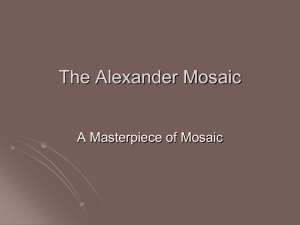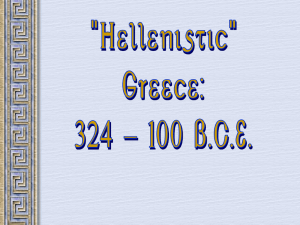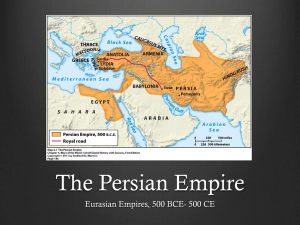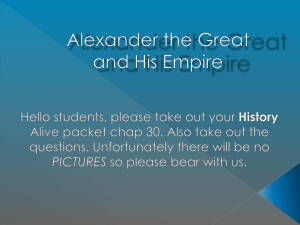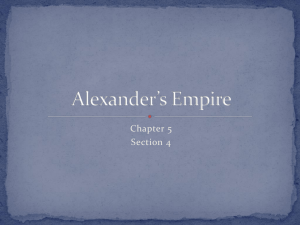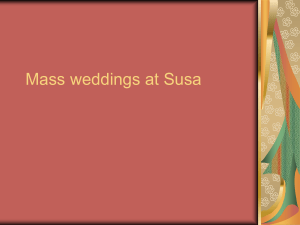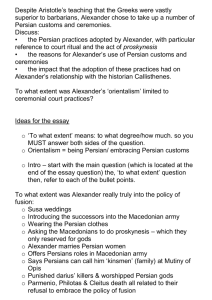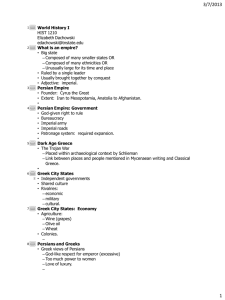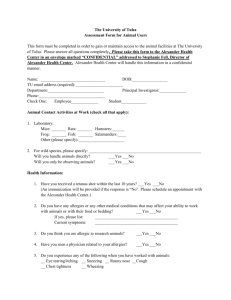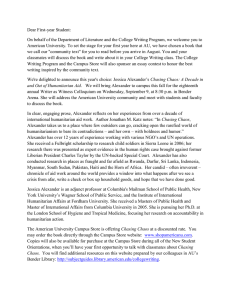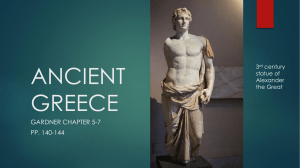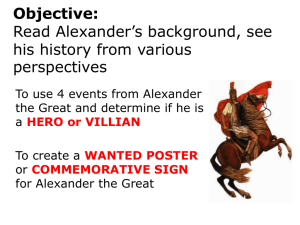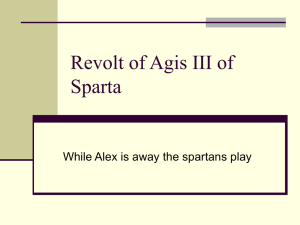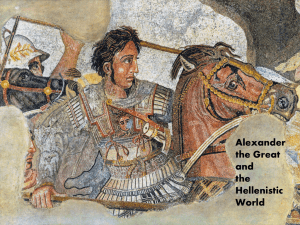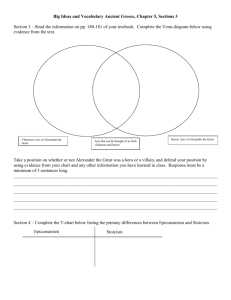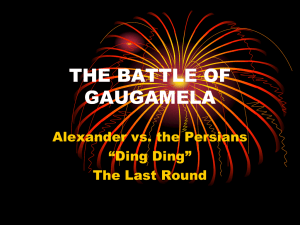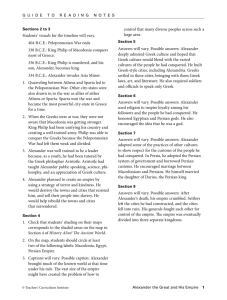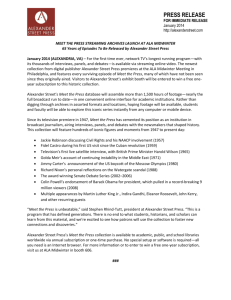The Alexander Mosaic
advertisement
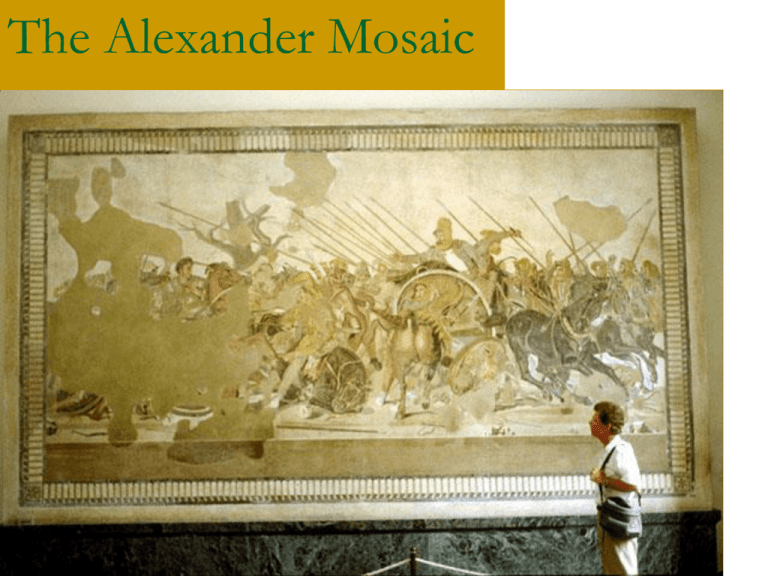
The Alexander Mosaic The Basics - 2nd Cent BC - Adapted from earlier painting? - Place – House of the Faun, on floor of exedra on north side of first peristyle. - 3.20 by 5.50m Technique – Opus verniculatum. Tesserae very small. Curve and wind around Content Alexander on horseback, Bucephalus, spearing an enemy Battle of Issus 333 BC, or Gaugamela in 331 BC Persian King, Darius III, fleeing on chariot Style Sense of depth through overlapping and three quarter views More like a painting than a mosaic. Much more three dimensional than normal mosaic. Realistic depiction of scene by using: Shading Foreshortening – Horses proportions correctly rendered in relation to the angle from which we see it, so that the part of the animal that is further away is shortened Shadowing – light from left Features linking to third or fourth century BC Limitation of colours to white, yellow, red and black, the ‘four colour’ technique adopted by fourth and fifth century BC Greek painters Scarcity of landscape features (only a tree and rocks) Shallow depth of field in scene, any depth being conveyed by foreshortening and overlapping Composition Persian King the key figure He is above the rest, while Alexander slightly lower, is still above figures on his side Darius arm outstretched and Alex spear raised Linked by gesture and intensity of stare Alexander given a wild eyed intensity Darius portrayed sympathetically looks in dismay Rest of action is a jumble of soldiers, weapons and horses, conveying chaos and confusion of battle Focus Greek inspired art, human participants focus Question In what ways is a sense of confusion or chaos depicted?
